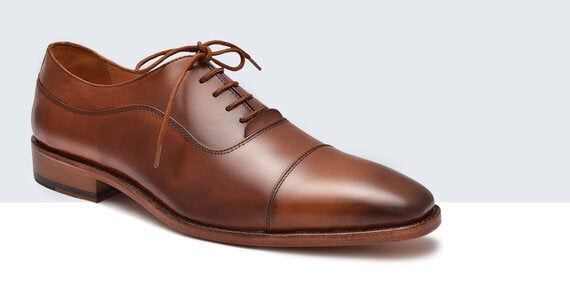
To assess the quality of a pair of shoes at a glance, simply look at the welt. The welt is the strip around the perimeter of the shoe that binds the outer sole to the leather upper. The stitching - or lack thereof - on this aspect of the shoe is the hallmark of a high quality shoe.
A high-quality shoe features a sewn welt, meaning that the sole is actually stitched to the upper. This allows a cobbler to easily replace the sole and keep the shoe in good repair for decades. Most cheaply made shoes today use adhesive rather than welts, cementing the upper directly to the sole. This means that once the sole wears out, the entire shoe has to be thrown out.
Welted construction makes the difference between a pair of shoes that last a lifetime and those that have to be thrown away after a season or two. The two most common welts in the industry are the Goodyear Welt and the Blake Stitch.
The Blake stitch employs a single channeled stitch that runs straight along the outsole, holding the multiple elements of the shoe together. In essence, the upper is folded over at the edge and sewn directly into the sole. The advantage is that it can produce a sleeker look. However, it has, over time, become less common, as it requires a specific Blake machine to resole the shoe making it more costly and difficult than the Goodyear welt, as well as less water-resistant.
The Goodyear welt, by contrast, has grown in popularity to become the most respected and enduring method of construction in the shoe industry. The process takes it name from American inventor Charles Goodyear Jr., who developed it in 1869.
The Goodyear welt starts by stretching the shoe's upper over a last in order to connect it with the insole, mid-sole and welt using a welt-stitch. The welt itself forms a cavity that is filled with cork, or a similar moldable material that creates a custom fit, as well as a water-resistant seal and allows for easy resoling.
The Goodyear welt takes time, and requires skilled labor. It demands commitment on the part of the manufacturer to never settle for less than the best. Quality shoe brands offer customers the most durable, beautiful shoes possible, inside and out, from first stitch to last.